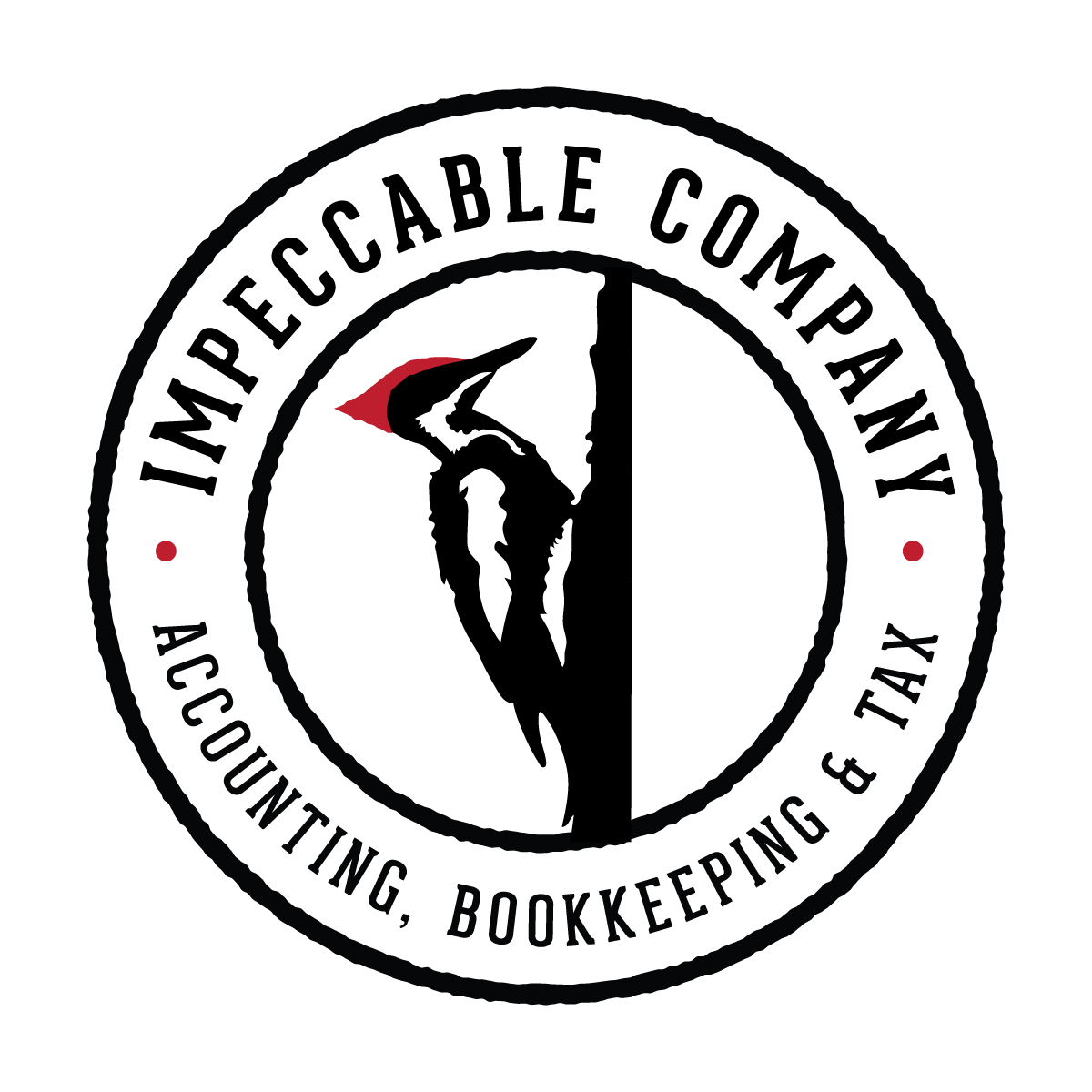
Cash Flow Planning for Small Business
A profit and loss statement can give you a clear picture of where your business has been but how do you determine where your business can go in the immediate future? We all need positive cash flow to ensure the stability of our business. Late payments result in penalties, interest and possibly a damaged reputation. Knowing our cash flow situation allows the business owner to make quicker, more self-assured decisions when it comes time to expanding operations. The only problem is, most business owners don’t know enough about their current cash flow. But there’s a way to improve how you manage your cash flow so you can increase your business’s financial security. If you’re using QuickBooks, these tools are already included in your software subscription. Are you using them yet?
Cash flow planning establishes cash flow projections for upcoming months so you know how much you’ll have in your bank account for operations. Taking the time for cash flow planning is smart business management because it allows you to avoid or prepare for financial shortcomings. It also allows you to create a more reliable financial plan for budgeting, investing in equipment, and achieving other business goals.
What is cash flow planning?
Cash flow is the movement of money in and out of your business—essentially, the total of how much money is going in and coming out on a monthly basis. Cash flow doesn’t refer to your overall revenue or profitability, but how much cash you have available in a given period. This is known as the ‘accounting period’. You can choose any time period that makes sense for your business, like a month or a quarter. A company’s cash from operating income will exceed its net income on a routine basis in order to remain solvent and grow.
Cash flow planning involves forecasting months ahead to make sure you have enough cash on hand to handle expenses or pay employees, for example. A cash flow plan is a tool that every business owner should utilize in order to better prepare for the future. Cash flow planning is most helpful for keeping you on track financially for the short term.
QuickBooks found that 80% of small business owners say cash flow concerns cause them stress. However, with a carefully calculated cash flow plan, that doesn’t have to be you. Get in touch with us if you’d like help setting this up!
Why is cash flow planning important?
Proper cash flow management is essential for any business. Failing to maintain a healthy cash flow can create serious trouble for your business, from taking on significant debt to closing your doors for good.
When it comes to the big picture, it might not seem like a few bad months can really impact your bottom line that much. However, negative cash flow can have a domino effect on other aspects of your business; the stakes are actually pretty high.
- Small business owners lose thousands of dollars each year by foregoing projects or sales due to insufficient cash flow.
- Poor cash flow management is a reason why many small businesses close.
- Cash flow is an issue that affects many small businesses—it’s a key risk for not being able to pay employees on time.
To help prevent your business from becoming another statistic, it’s imperative that you commit to good cash flow planning practices.
Benefits of cash flow planning
In addition to making sure you have enough money to keep your business afloat, some of the benefits of cash flow planning include:
- Having a reliable estimate of how much money will be going out of your business each month.
- Identifying the typical cash deposits and withdrawals your business accounts for each month.
- Establishing a reasonable prediction of how much money you can expect to come from sales each month.
- Allowing you to make informed decisions when it comes to current and future spending—like when you’ll be able to make new hires.
- Increasing the financial stability of your business for better long-term financial management.
- Helping you ensure your pricing is viable and allowing you to bring in the amount of cash you need to cover expenses.
- Identifying patterns where you’re spreading your cash too thin so you can adjust expenses as necessary—like finding a cheaper insurance policy.
- Managing your inventory levels so you don’t invest too much at one time, which limits your liquidity.
- Helping you determine when is a good time to repay debts, grow your cash reserves, and take other proactive financial measures.
- Guiding you out of a rut and into a positive cash flow.
As you can see, it’s wise to create a cash flow plan and make this a regular practice for your business.
How to create a cash flow plan
Now that you know what cash flow planning is and why you should be doing it, it’s time to put a plan into action.
But where do you get started? When you break it down step-by-step, cash flow planning isn’t as intimidating as it may seem. Here are the basics of what you need to do to get started with your cash flow plan:
- Identify your goals, including how far out you want to plan for. Depending on how new your business is, it may be unrealistic to try to forecast more than two or three months in advance. A good starting point is to create a cash flow plan for the next 90 days.
- Make a list of all of the monthly expenses that make up your outgoing cash flow. Cash outflow typically includes rent, insurance premiums, payroll, loan payments, marketing spend, tax payments, and materials. Usually, many of these costs will be the same from month to month, but if you’re planning on a large one-time expense, make sure to account for it.
- Create a list of all the incoming cash you can expect each month. Cash inflow can include sales, money from investors or bank loans, or tax refunds. While it may seem difficult to predict sales, you can use prior records to establish reasonable estimates.
Once you have a general idea of how to account for your incoming and outgoing cash, you can figure out your monthly cash flow. Simply subtract outgoing money from incoming money—this will give you either a positive or negative cash flow for the month. If you’re consistently seeing a negative cash flow, you could be headed for serious financial trouble.
You can create a proactive cash flow plan with the information you glean about your financial situation from cash inflow and outflow. That way, you can start to right the ship and improve your business’s financial health before you get too far off course.
Cash flow planning tips
Cash flow is a major pain point for 61% of small business owners around the world. However, with a reliable planning strategy, you can establish more accurate forecasting and enjoy peace of mind when it comes to your business’s finances.
Here are a few tips to make cash flow planning as quick and painless as possible:
- Use the cash flow statement for prior periods and detailed bank records of all cash transactions to create your cash flow plan.
- Advance your methodology as you become more comfortable with creating cash flow forecasts. For example, you can use your business’s balance sheet and income statement for more in-depth analysis.
- Keep seasonal variations in your incoming cash flow in mind. If your business operates in a tourist area or sells seasonal products or services, this applies to you.
- Be prepared for the possibility of delayed payments—it’s not uncommon for clients to take their time paying their invoices.
- Use advanced tools and online software to help automate calculations and ensure accuracy.
- Bring in a financial advisor if you find yourself in an especially precarious position.
Quickbooks offers the Cash Flow center to simplify your cash flow planning, which gives you access to:
- Custom Cash Flow Planner that allows you to forecast up to 90 days in advance.
- A dashboard that gathers all your business balances in one place for a full financial picture.
- Automatic syncing of all transactions to your dashboard for accurate data.
- QuickBooks Cash checking account that allows you to make instant deposits, organize cash in virtual envelopes for better budgeting, and earn interest as high as 1% APY.
Create your cash flow plan
Managing your cash flow is key to smart financial planning. Create your own cash flow plan to help your business reach its annual financial goals and achieve the stability you need for longevity. QuickBooks makes cash flow planning much simpler, but just as effective, so you can focus on growing your business. Remember, cash flow forecasts aren’t 100% accurate, but they provide a good basis for making smart financial decisions for the short term. One thing is certain: Establishing a cash flow plan can only benefit your business. Contact us today to get started on your cash flow plan.
How do I increase cash flow?
Figuring out how to spend money is critical to success, which is why budgeting and forecasting is so important. While some like to use spreadsheets for their budgeting process, we love
QuickBooks Online’s budgeting feature for several reasons. This robust budgeting tool is already tied directly to your accounting system, so the numbers are accurate and timely. QBO is also cloud based, so you or your team always has access to the information. QBO has a very powerful online budgeting capability. Are you making the most of it? We can show you how.
Identifying expenses that you want to trim, and spending in areas that help you make more money are key to increasing cash flow.
Last point on this topic: we can help you increase your cash flow by taking the accounting and tax burden off your shoulders. We don’t sell time, we take care of your entire accounting back office at a set rate so you are free to do the work that increases profit in your business. Each month, you know what to expect in accounting costs. No surprises.


